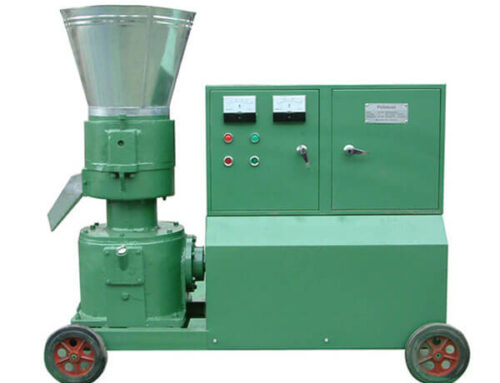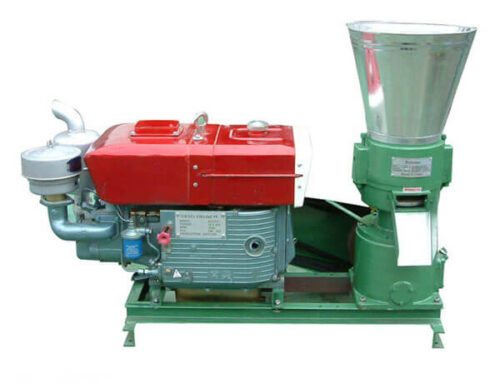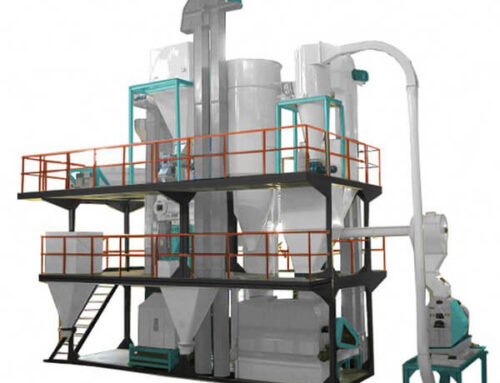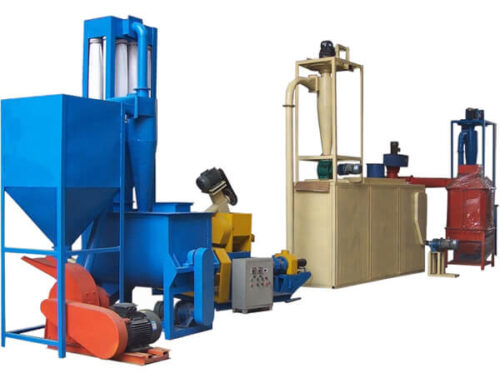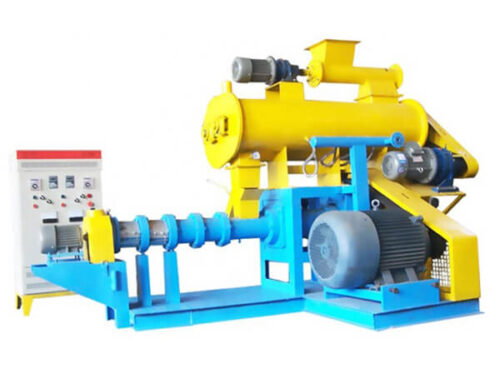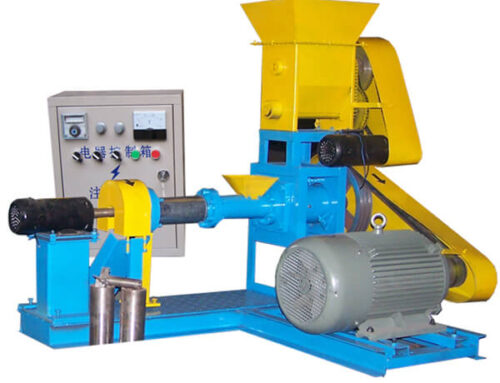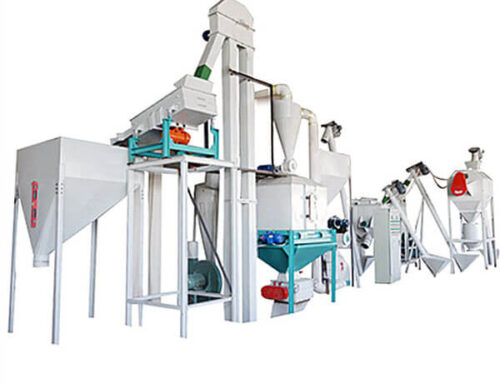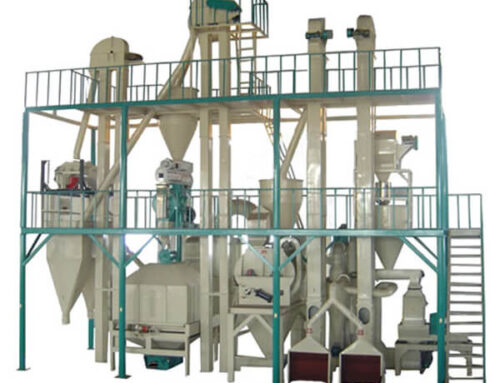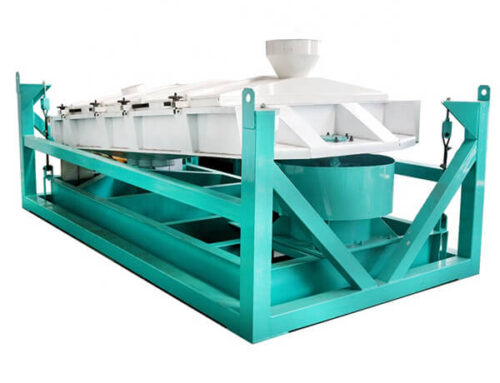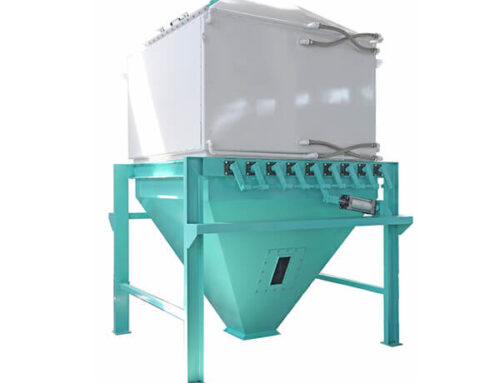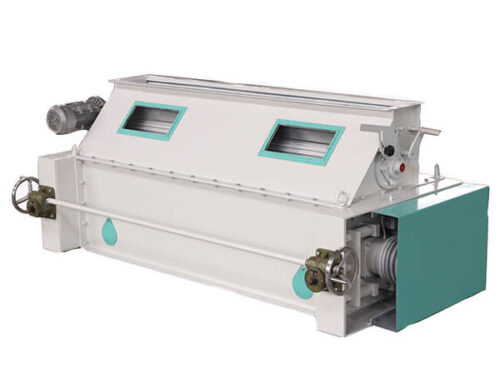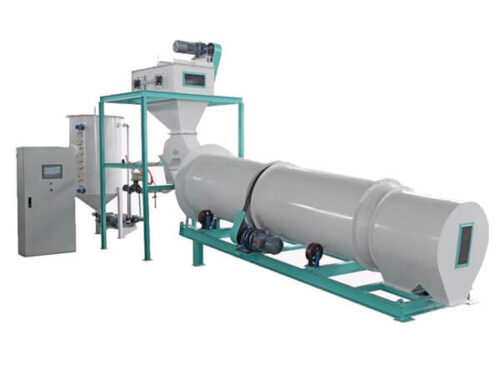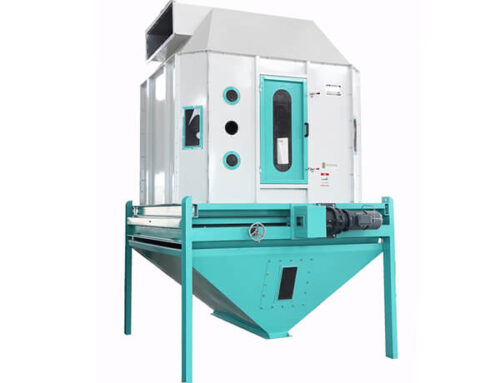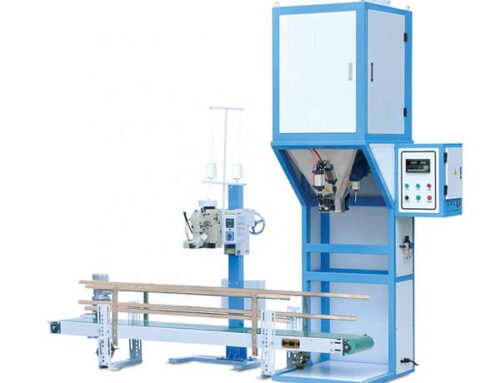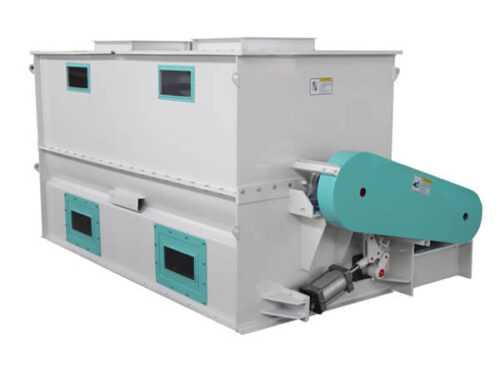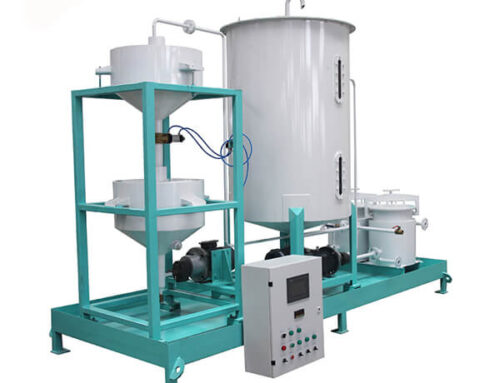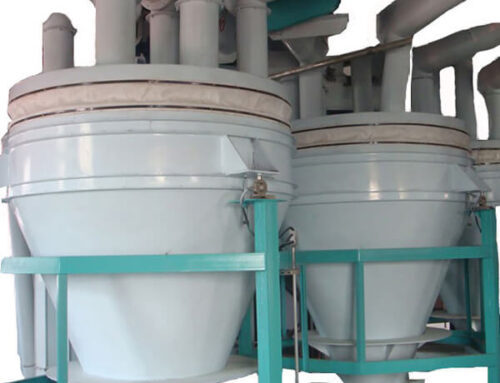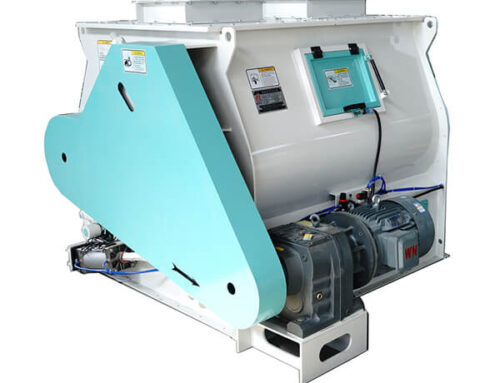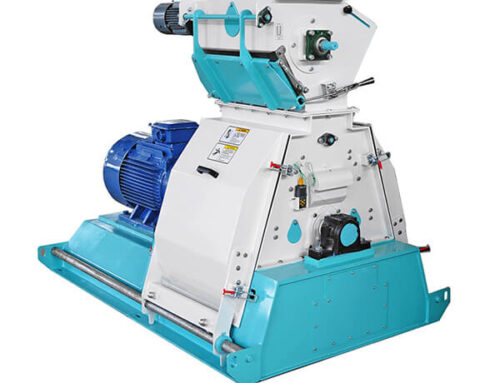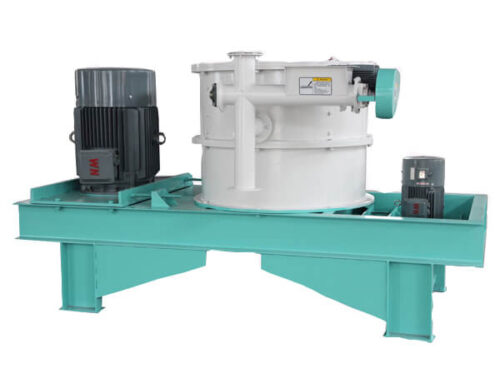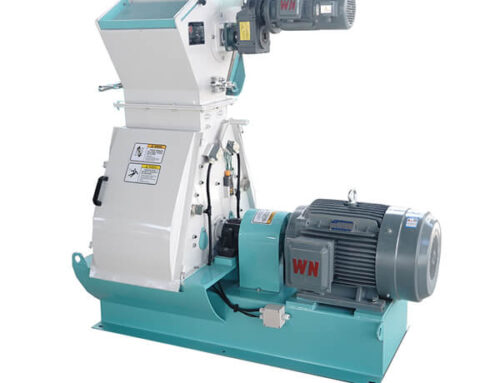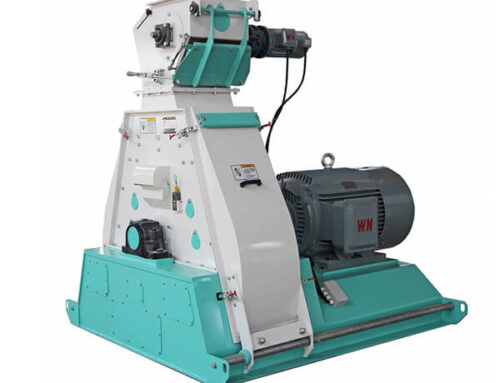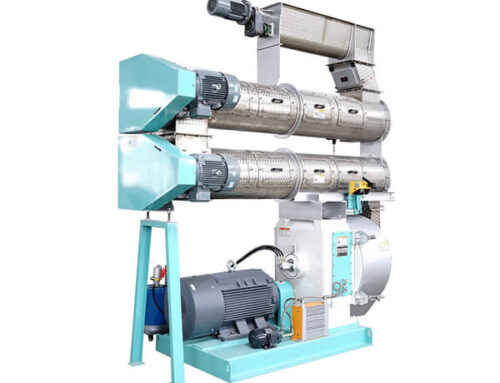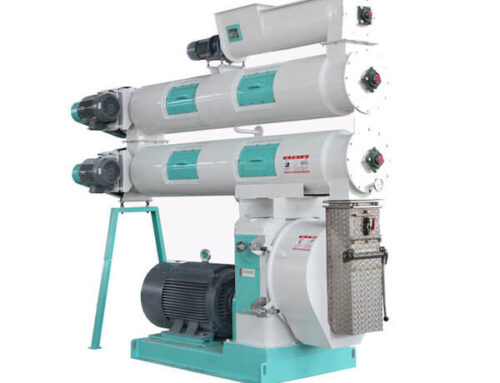Pig Feed Pellets Production Process
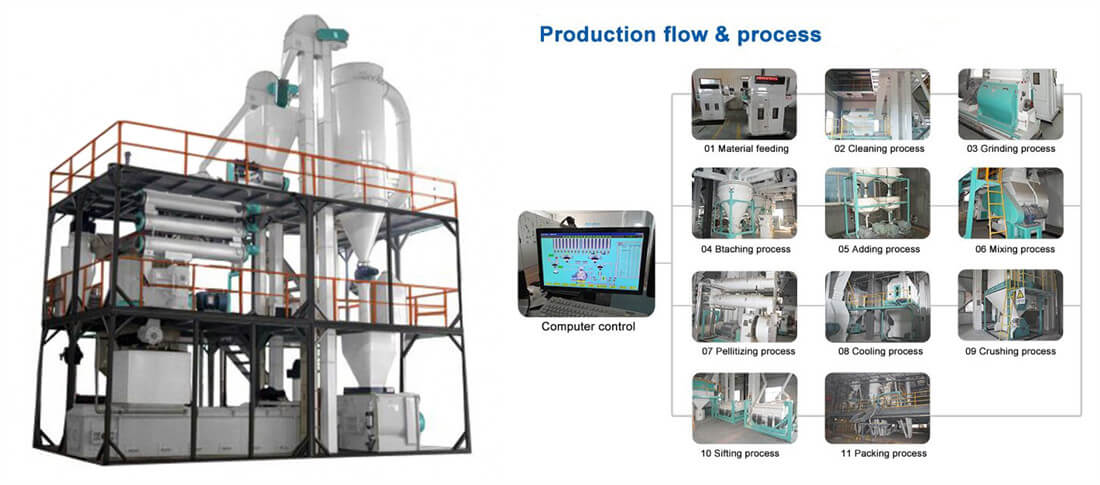
Raw materials crushing.
Raw materials need to be crushed first before pelletizing. As to the materials grinding, you can weigh the raw materials according to the formula and then ground them in feed hammer mill, or you can ground them separately and then mix. These two methods are both OK and you can choose according to your self condition. The fineness of raw materials have a significant effect on feed use efficiency. The smaller the size of ground raw materials, the easier the gelatinization of materials, thus easier pellets to be formed. For pig feed pellets making, the screen sieve diameter of feed hammer mill is less than 1mm, while for weaned piglet is only 0.3mm.
Raw materials mixing.
Mixing is an essential operation for the whole pig feed pellets production line. Grounded raw materials should mix evenly before sent to be pressed.
Pig feed pellets pressing.
Pressing is the core process for pig pellets producing. Moisture content, temperature, and steam pressure during this process have a great influence on the quality of the final pellets. Pellet’s hardness will increase if the moisture content of raw materials is higher than 8-10%. The most suitable moisture content is 16-17%.
Temperature requirement is not higher than 88% which can range from 82℃ to 88℃ according to the pellet formation status and moisture content of the pellets. If the pelletizing temperature is low, the starch gelatinization is not sufficient, then pelletizing effect is lower; however, if the temperature is too high, the nutrient will lose seriously.
Steam pressure has a direct relation to moisture content and pelleting temperature. Generally speaking, proper steam pressure—between 394 KPa and 490 KPa will generate a good pelleting effect.
Pig feed pellets cooling and packing.
Pig feed pellets are soft and hot after processed by feed hammer mill, so transfer them into the feed cooling machine to remove heat and moisture contained in the pellets becomes necessary. After cooling, pellets are dry and hard, they can be transported to the packing machine to be packed in bags, which then becomes convenient for storage and transportation.
Global Pig Market
Pork is the world’s most consumed meat from terrestrial animals. Demand for pork has been rising in recent decades. The reasons for this can be the changes in consumption patterns as a result of an income increase in the middle-class with fast-growing economies. Pig sector is the fastest-growing livestock subsector for its increasing consumption demand. There were more than one million pigs killed each year worldwide. Pig breeding technologies have also made a few improvements, such as pig feed pellets, to turn pig production into a high-input, high-output industry.
Why Choose Pig Feed Pellets?
Pellet feed first appeared in Europe, and account for most of today’s feed market in America, Japan, Germany, etc. The average level of the world’s feed pellets using is about 60%. Then why choose feed pellets for breeding? Generally speaking, there are two types of pig feed: powdery feed and pellets feed. Powdery feed has two major feeding methods: dry feeding and wet feeding. Wet feeding is mixing the feed with water, which is not suitable for scientific feeding because of the reduction of food intake. As to dry feeding, if the powder is fine, it would affect pig food intake to some extent, while if the powder is coarse, pig food utilization rate may be influenced. Pellet feed has some superior advantages for pig breeding compared with powdery feed.
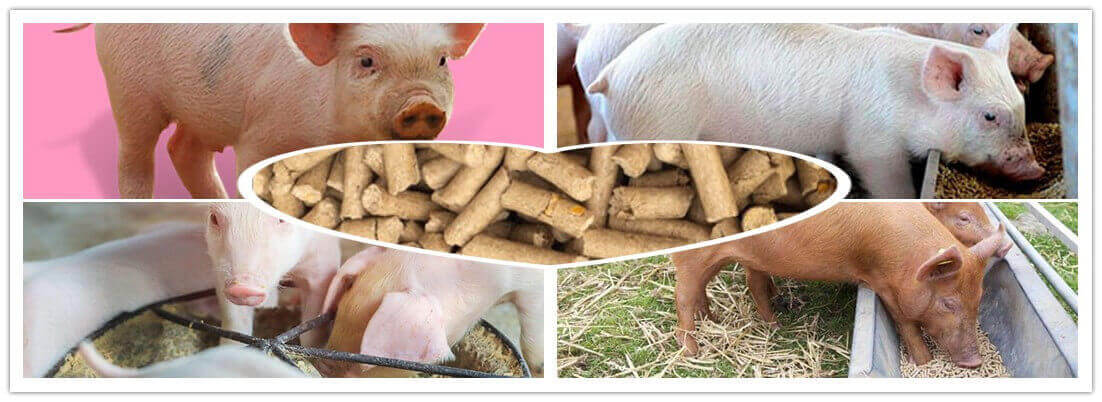
Advantages of Pig Feed Pellets
☆Disinfection and sterilization. During the pelletizing process, toxic substances or inhibiting factors are damaged due to the 100 ~ 120℃ hot steam. So pellets are more healthy for pigs.
☆Reduce waste and improve feed palatability. Feed pellets have large density and high nutrition concentration, which can improve the palatability and digestibility of pig feed. Moreover, feed pellet has uniform size and pelleted type, which avoids pigs from choosing what they like to eat.
☆Convenient for storing and transport. The volume of feed particles reduced about 1/3 than powder, together with its high density makes pellets easy to store and transport. Unlike powdery feed which is easy to absorb moisture and then become moldy, pig feed pellets scattered well and have high storage stability.
Pig Feed Pellets Making Formula
| Ingredient | FormulaⅠ | FormulaⅡ | Formula Ⅲ | Formula Ⅳ |
| Maize | 25.36% | 32.93% | 48.46% | 54.66% |
| Soybean Cake | 20.30% | 25% | 29.72% | 31.17% |
| Fish Meal | / | 24.31% | 11.12% | 4.86% |
| Wheat Bran | 5% | 10% | 2% | 2% |
| Fat | 2.60% | 3.38% | 2.61% | 3.79% |
| Others | 7.46% | 4.08% | 5.79% | 3.39% |
| Wheat Dextrin | 0.30% | 0.30% | 0.30% | 0.30% |
Tips for Feeding Pigs
Pig in different growth stage has different requirements, so small pellets for piglets and big pellets for big pigs as to pig feeding pellet size. Generally speaking, pellets with a size of 3/32 in. can be adopted for suckling phase pigs, while the size of 5/32 in. of pellets suit most for growing pigs and finishing pigs.

